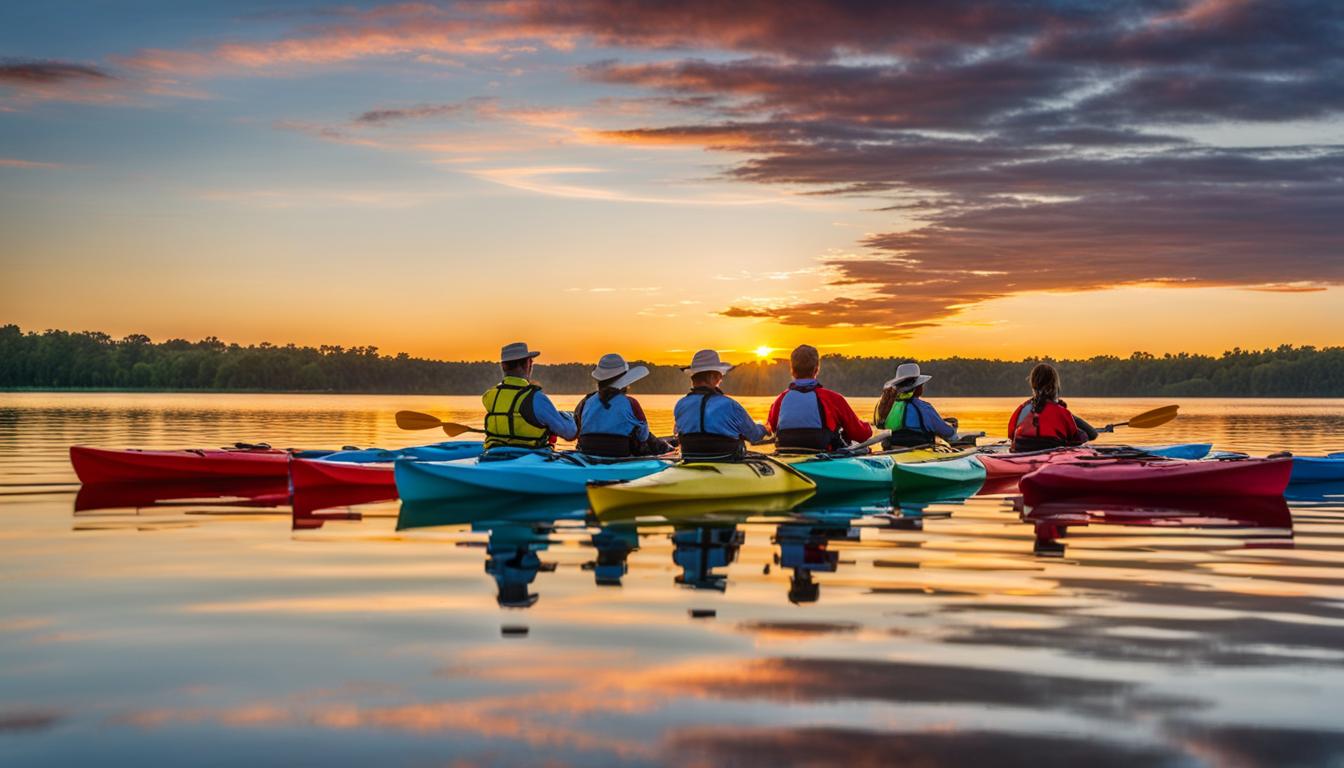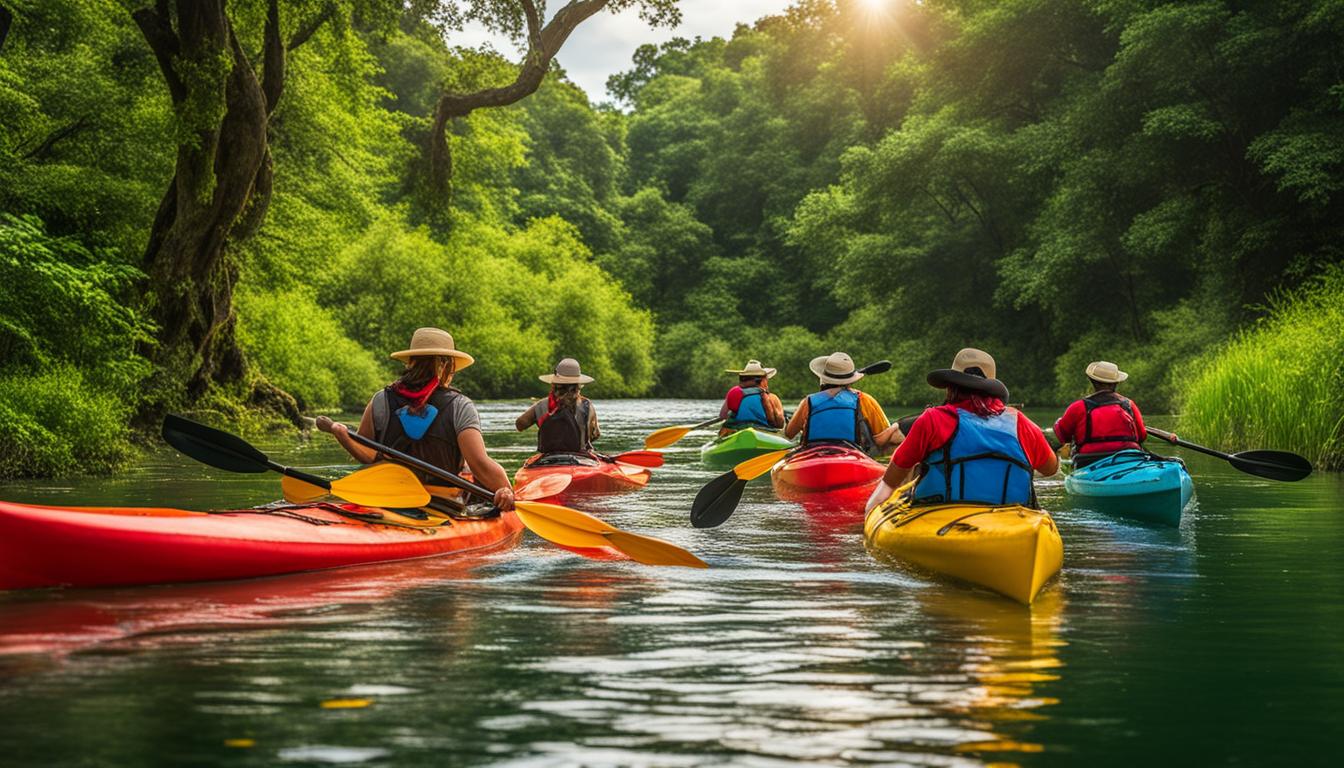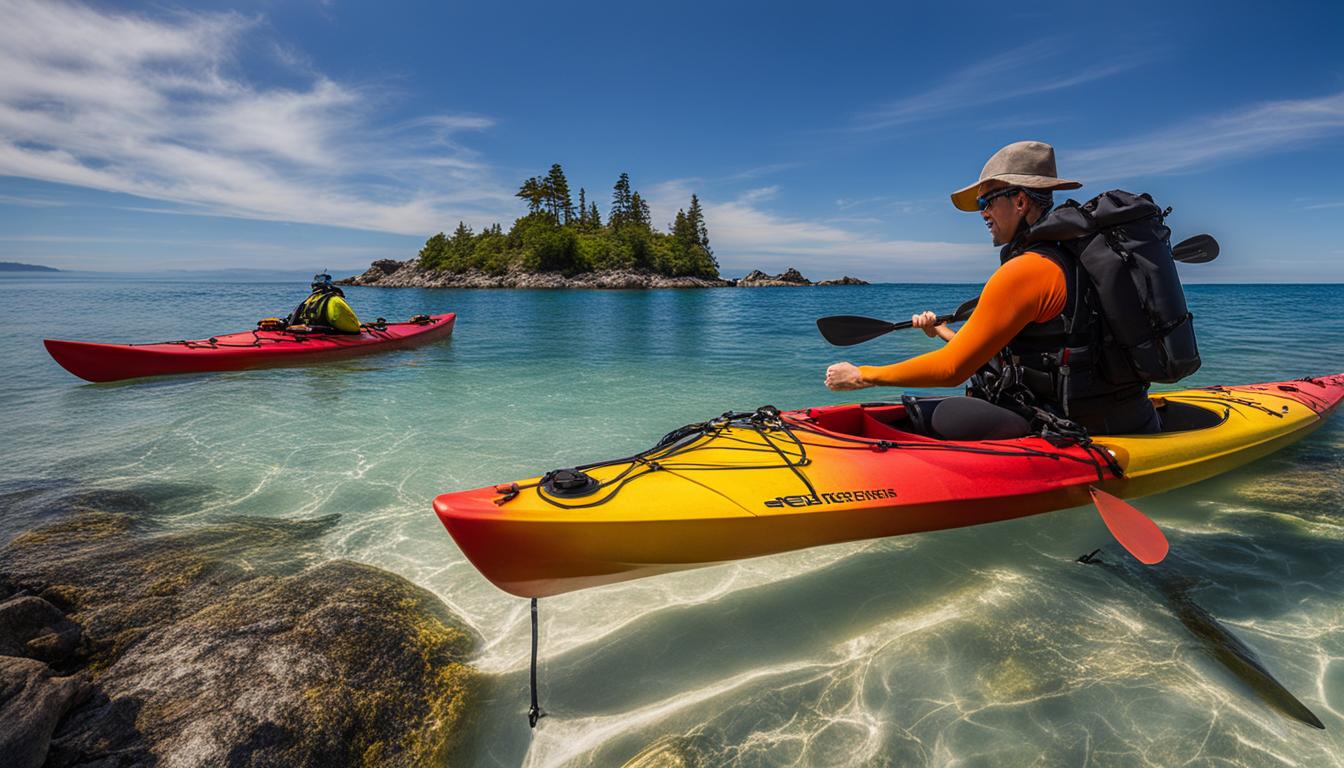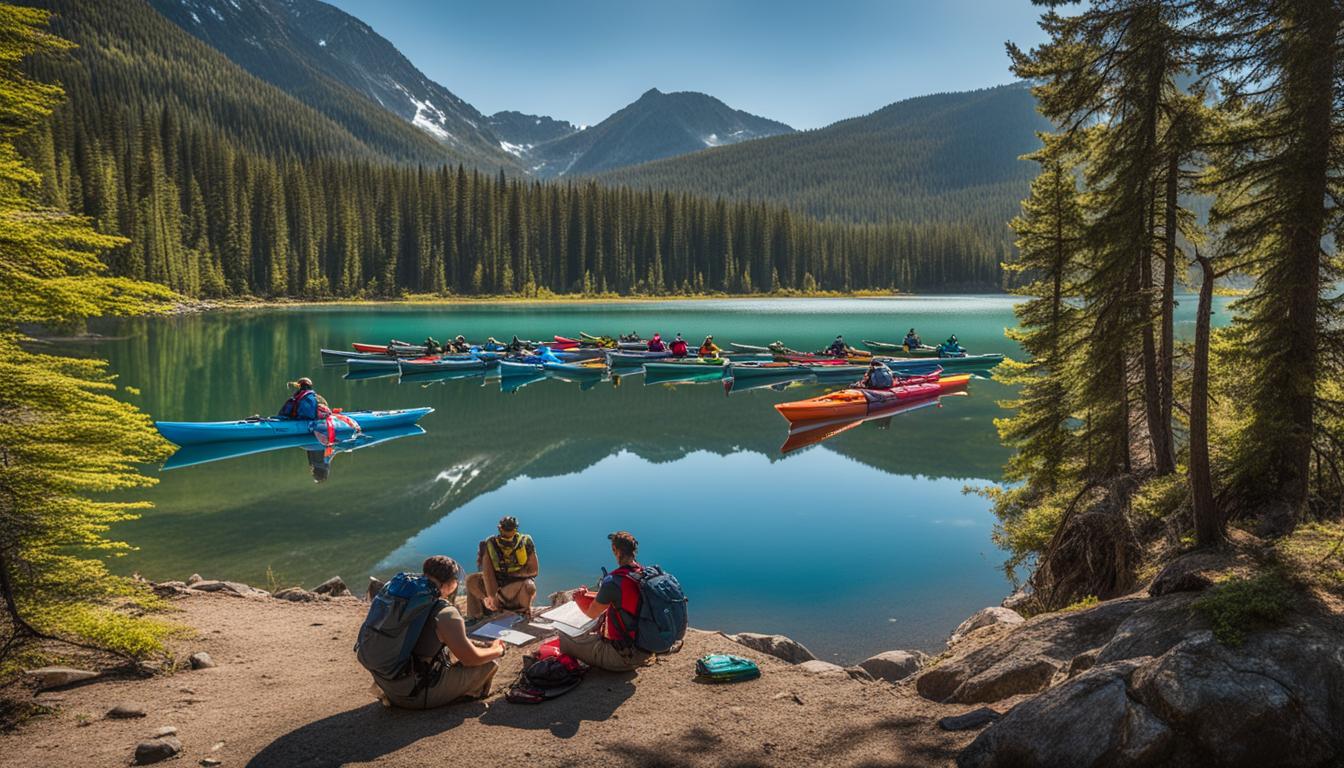When planning a kayak camping trip, one of the most important things to prepare is a well-stocked first aid kit. In the remote backcountry, accidents can happen, and being prepared with the right supplies can make all the difference. This article will guide you in packing the perfect first aid kit for your kayaking adventures.
Key Takeaways:
- Having a well-prepared first aid kit is essential for kayak camping trips.
- Include essential items such as adhesive bandages, sterile gauze pads, and medications.
- Consider your group size and trip length when determining the quantity of supplies to bring.
- Regularly check and update your kit to ensure it remains fully stocked and functional.
- With proper preparation, you can have peace of mind knowing you’re ready for any unexpected situations.
The Importance of Backcountry First Aid Skills
When venturing into the wilderness on a kayak trip, it’s not only crucial to have a well-stocked first aid kit, but also to possess the necessary backcountry first aid skills. In remote locations, professional medical care may be hours away, making it essential for kayakers to be prepared to provide initial treatment and stabilize victims before help arrives. Without these skills, injuries can quickly escalate, posing a serious threat to the safety of both yourself and your companions.
Taking a first aid training course is a valuable investment for any kayaker. These courses offer instruction on wilderness medicine, equipping you with the knowledge and skills to effectively manage injuries and emergencies while in the backcountry. You will learn how to assess injuries, apply appropriate first aid techniques, and make informed decisions in critical situations. By acquiring these skills, you can become a more confident and capable paddler, ensuring the safety of yourself and those around you.
Remember, accidents can happen anywhere, and being prepared with backcountry first aid skills can make a significant difference. Whether it’s treating minor wounds or stabilizing a more serious injury, having the knowledge and confidence to provide immediate care can drastically improve outcomes. So, before embarking on your next kayak camping adventure, consider enrolling in a first aid training course and equipping yourself with the skills necessary to handle any unforeseen situations that may arise.
“Taking a first aid training course can enhance your skills and preparedness for emergencies.”
Table: Comparing Different Types of First Aid Courses
| Course Name | Duration | Curriculum | Certification |
|---|---|---|---|
| Basic Wilderness First Aid | 2 days | Focuses on backcountry injuries and treatment techniques | Basic certification |
| Wilderness First Responder | 8-10 days | In-depth training covering a wide range of medical emergencies | Advanced certification |
| Advanced Wilderness Life Support | 5 days | Intensive course for healthcare professionals or advanced outdoor enthusiasts | Advanced certification |
As you can see from the table above, there are different types of first aid courses available, each catering to various levels of expertise and needs. Consider your own requirements and choose a course that aligns with your goals and the level of responsibility you wish to assume during your kayak trips.
Building Your Kayak First Aid Kit
When preparing for a kayak camping trip, one of the most important things to consider is packing a well-stocked first aid kit. Whether you choose to purchase a commercially available kit or build your own, having the right supplies on hand can make a big difference in your safety and well-being. Here are some essential items to include in your kayak first aid kit:
- Wound care supplies: Adhesive bandages, sterile gauze pads, and butterfly wound closure strips are essential for treating cuts, scrapes, and other minor injuries.
- Cleansers: It’s important to have iodine pads or other antiseptic cleansers to clean wounds and prevent infection.
- Medications: Painkillers, antihistamines, and antiseptic creams are some common medications to include in your kit. It’s always a good idea to consult with a healthcare professional before adding any medications to your kit.
- Tools: Tweezers, scissors, and a small mirror can be handy for removing splinters, cutting tape or cloth, and checking wounds.
- First aid reference booklet: Including a reference booklet with instructions on basic first aid techniques can be helpful, especially if you’re unsure how to treat a specific injury.
- Accident/soap report forms: It’s a good idea to have forms for documenting accidents or illnesses, as well as a small notebook and pen for taking notes.
Remember to pack your first aid supplies in a waterproof case to keep them dry and protected. Regularly check and replenish the contents of your kit to ensure that everything is in working order. If you’re going on a longer trip or with a larger group, consider bringing extra supplies to accommodate for potential emergencies. Additionally, having a compact first aid kit that you can easily carry with you in a PFD pocket or hydration pack is important for quick access to basic items. Stay prepared and stay safe on your kayak camping adventures!
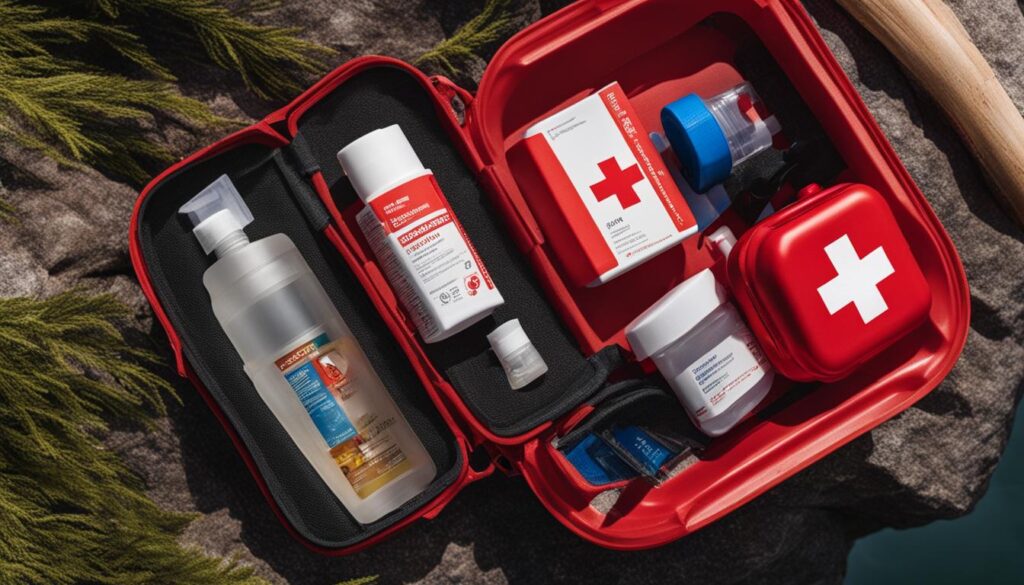
Packing Tips and Recommendations
When it comes to preparing a kayak trip first aid kit, there are a few important packing tips and recommendations to keep in mind. By following these guidelines, you can ensure that your kayak camping medical kit is efficient, organized, and ready for any emergencies that may arise.
Choose a Waterproof Case
One of the most important considerations when packing your first aid kit is to choose a waterproof case to protect your supplies from moisture. Kayaking involves exposure to water, so it’s essential to keep your medical supplies dry and protected. Look for a sturdy, waterproof case that can withstand the elements and keep your first aid items in good condition.
Regularly Check and Replenish
Another crucial step is to regularly check and replenish the contents of your kayak camping medical kit. Make a habit of inspecting your first aid supplies before each trip to ensure that everything is in working order. Check expiration dates on medications and restock any items that are running low. By keeping your kit up to date, you can be confident that you have all the necessary supplies when you need them most.
Pack for Your Trip Duration and Group Size
When determining the quantity of supplies to bring, consider the size of your group and the length of your trip. If you’re traveling with a larger group or embarking on a longer expedition, you may need to pack additional quantities of essential items like bandages, gauze pads, and medications. Take into account the number of people you’re responsible for and plan accordingly to ensure that you have enough supplies to handle any potential injuries or illnesses.
Additionally, it’s a good idea to have a compact first aid kit that you can easily carry with you in a PFD pocket or hydration pack. This way, you’ll have quick access to basic items like adhesive bandages, antiseptic creams, and pain relievers while you’re out on the water. Remember, preparation is key when it comes to kayak camping, and a well-packed first aid kit is an essential part of your safety gear.
| Essential First Aid Kit Supplies | Quantity |
|---|---|
| Adhesive Bandages | 10 |
| Sterile Gauze Pads | 5 |
| Butterfly Wound Closure Strips | 5 |
| Iodine Pads | 10 |
| Painkillers | 10 |
| Antiseptic Creams | 2 |
| Tweezers | 1 |
| Scissors | 1 |
Remember to also include a first aid reference booklet and accident/soap report forms in your kayak camping medical kit. These additional resources can provide guidance in emergency situations and help you document any incidents that occur during your trip. With proper preparation and a well-stocked first aid kit, you can enjoy your kayak camping adventures with greater peace of mind.
Conclusion
Having a well-prepared first aid kit is essential for kayak camping trips. By including the necessary supplies and having some knowledge of backcountry first aid, you can better handle injuries and emergencies while out on the water.
Remember to regularly check and update your kit to ensure it remains fully stocked and functional. With the proper preparation, you can have peace of mind knowing that you’re prepared for any unexpected situations that may arise during your kayaking adventures.
FAQ
Can I buy a ready-made first aid kit for kayak camping?
Yes, you have the option to purchase a commercially available kayaking first aid kit. However, building your own allows for customization based on your specific needs and preferences.
What are the essential items to include in a kayak first aid kit?
Some essential items to include are wound care supplies like adhesive bandages, sterile gauze pads, and butterfly wound closure strips. You’ll also need cleansers such as iodine pads, medications like painkillers and antiseptic creams, and tools like tweezers and scissors. Don’t forget a first aid reference booklet and accident/soap report forms.
How should I pack my kayak first aid kit?
Choose a waterproof case to keep the supplies dry and protected. Pack like items together in well-marked bags or boxes for easy access. Consider the size of your group and the length of your trip when determining the quantity of supplies to bring. It’s also a good idea to have a compact first aid kit that you can easily carry with you in a PFD pocket or hydration pack for quick access to basic items.
Why is it important to have backcountry first aid skills for kayak camping?
In remote locations, professional medical care may be hours away. Having some degree of backcountry first aid skills or knowledge of wilderness medicine allows you to stabilize a victim, assess injuries, and provide field treatment. Taking a first aid training course can enhance your skills and preparedness for emergencies.
How often should I check and update my kayak first aid kit?
It’s important to regularly check and replenish the contents of your first aid kit to ensure everything is in working order. Check expiration dates and replenish any items that have been used or are close to expiring. This will ensure that your kit is fully stocked and ready to go when you need it.


